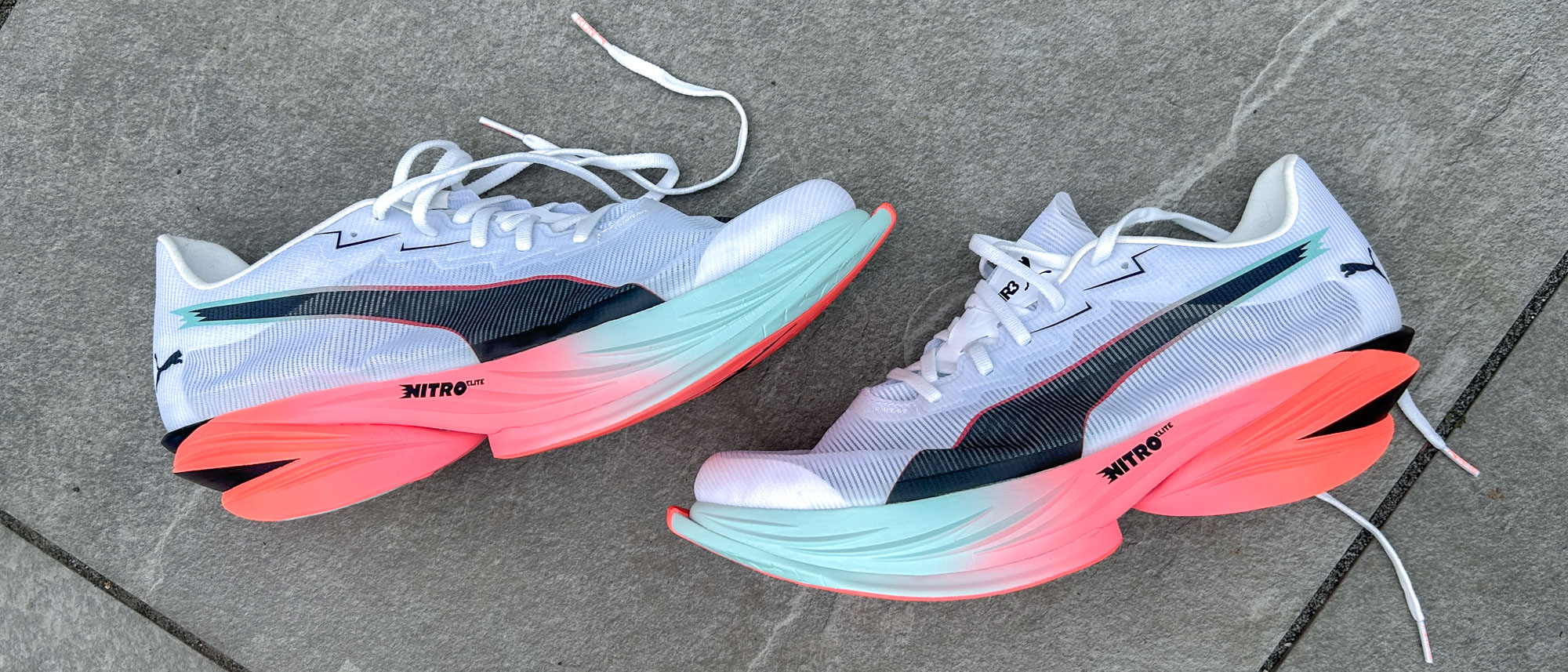Tom's Guide Verdict
The Puma Fast-R Nitro Elite 3 is one of the fastest racing shoes available, thanks to its lightweight and aggressive design. It will help you log your best times, but it’s not likely to be a very durable shoe, and the rockered design pushes you to run in a certain way, which might put off some runners.
Pros
- +
Fast, efficient ride
- +
Incredibly light for a high-stack shoe
- +
Good grip
Cons
- -
Not very durable
- -
Aggressive rocker won’t suit everyone
Why you can trust Tom's Guide
The best carbon plate running shoes are always launched with a lot of hype, claiming they’re the fastest ever. But, with the Fast-R Nitro Elite 3, Puma backed up those claims with research showing the shoe could offer a substantial improvement in running efficiency compared with other top racing shoes.
Running more efficiently means you can sustain faster paces for longer, and I was very excited to get hold of the Puma Fast-R Nitro Elite 3 just before tackling the London Marathon.
A couple of training runs in the shoe impressed me enough to use it on race day, and I logged my second fastest marathon in the Fast-R 3 at London, running 2:26:48.
In my Puma Fast-R Nitro Elite 3 review, I’ll explain why I think it’s one of the best racing shoes available, but also cover some downsides to the shoe.
Puma Fast-R Nitro Elite 3 review: Price and availability

The Puma Fast-R Nitro Elite 3 launched in April 2025, costing $300 in the U.S. and £260 in the U.K., making it $40 more than the Fast-R 2 and one of the most expensive carbon plate racing shoes on the market.
Owing to the hype surrounding its launch, the initial run of the shoe in the White/Mint/Red color sold out quickly, but it will be available again in the future. Puma also has the more affordable Deviate Nitro Elite 3 carbon plate racer in its line-up, which is $230.
Puma Fast-R Nitro Elite 3 review: Design and fit
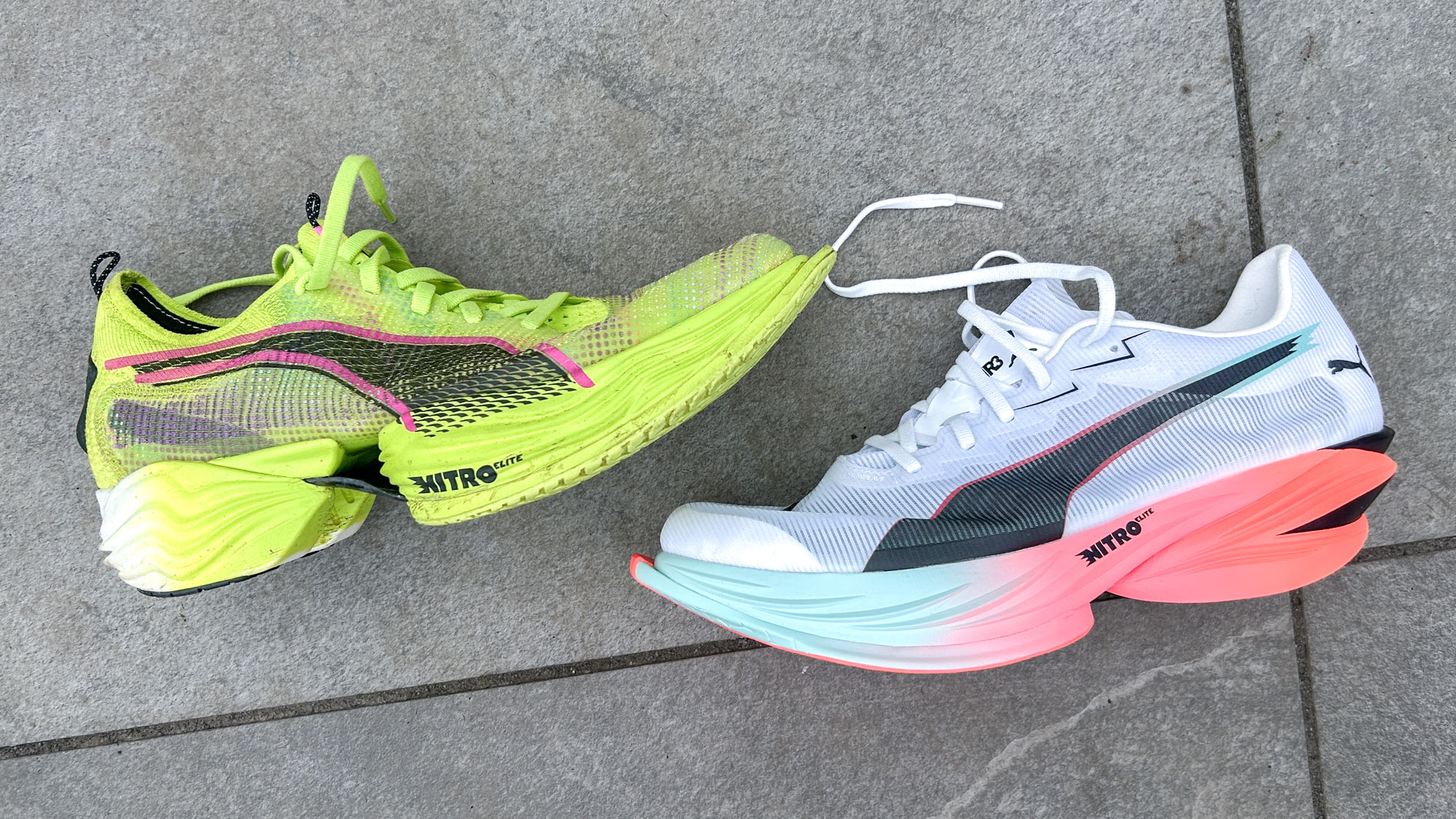
The Puma Fast-R 3 is one of the lightest racing shoes I’ve tested, tipping the scales at just 6.6oz in a US men’s size 10.
Get instant access to breaking news, the hottest reviews, great deals and helpful tips.
That’s substantially lighter than the Fast-R 2, which is 9oz in the same size, and the weight reduction is a big plus given that the stack height is still 40mm at the heel and 32mm at the forefoot, so you’re getting a lot of cushioning underfoot for long races.
It has an 8mm drop like Puma’s other racers, and I found the fit to be similar to the one on the Deviate Nitro Elite 3, in that it’s just a little long for me in my normal size. I ran and raced happily, but I could maybe go half a size down.
Note that it’s quite a narrow shoe, though, which is fine for me as I have a narrow foot, but those with wider feet might find the Fast-R 3 tight around the midfoot.
Upper
The thin, translucent mesh upper on the Fast-R 3 is very lightweight and minimal, with just a touch of padding around the back of the shoe.
It held my foot securely and comfortably throughout long runs, without any rubbing or hotspots, and the upper dries quickly.
I ran the London Marathon on a hot day, and the shoe was breathable and the upper didn’t feel soggy even after running through showers on the course or dumping water over myself.
Midsole
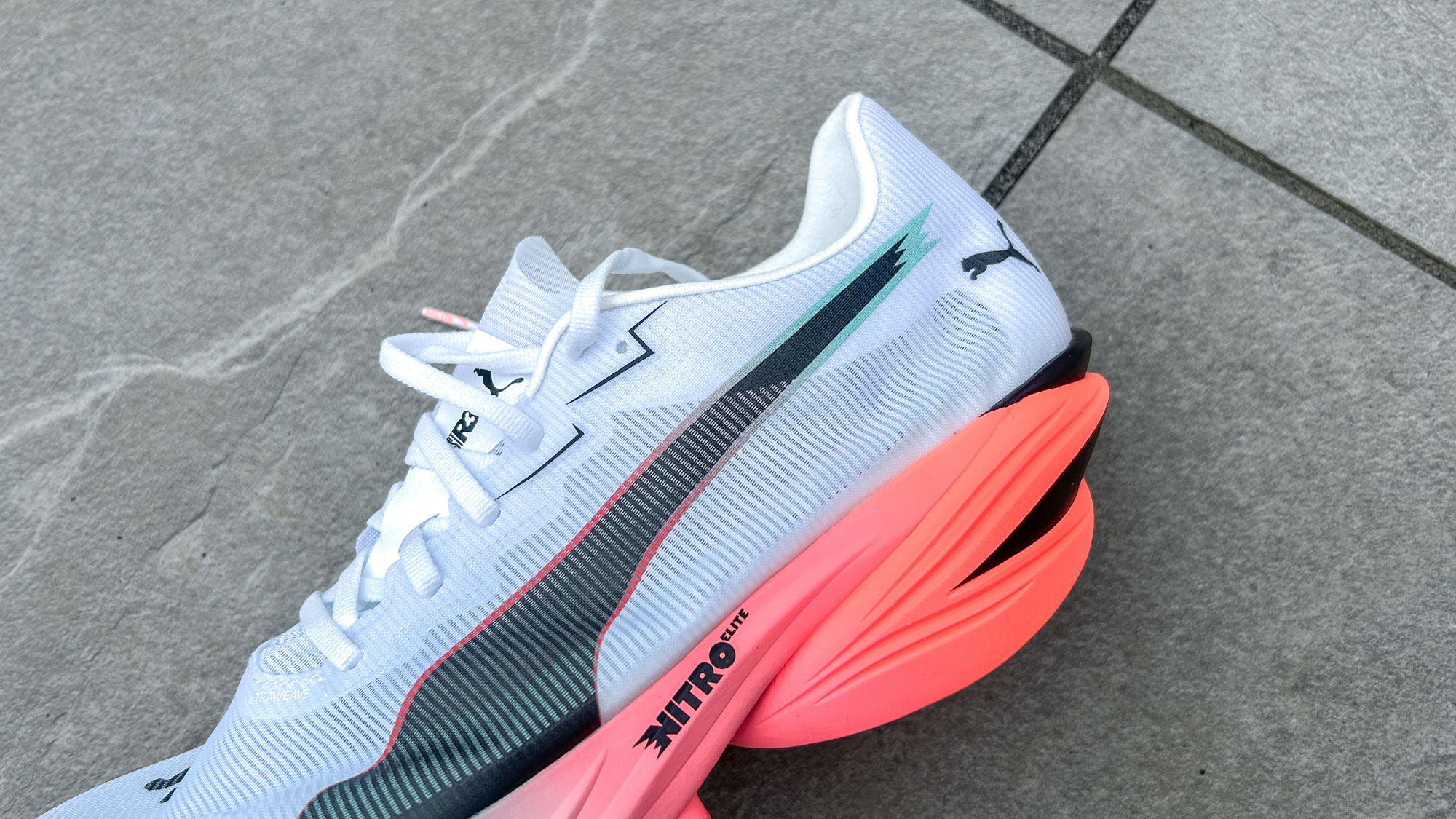
The midsole on the Fast-R 3 is not completely decoupled like that of the Fast-R 2, but you can still see the carbon PWRPLATE running through the foam through the large cutout on the bottom of the shoe.
There is also a cutout under the heel of the shoe, which pushes you to land more towards your midfoot, and the Fast-R 3 has an aggressive rocker profile to push you onto your toes.
The carbon plate then actually extends beyond the front of the shoe, which Puma says helps to increase the efficiency of the ride.

This is a unique feature of the Fast-R line, but it will be interesting to see if other brands adopt it in the future, given the impressive performance of the shoe.
The midsole foam is Puma’s Nitro Elite, which is made from aliphatic TPU and is a highly lightweight and responsive material. It’s not as squishy and soft as some foams, but comfortable for long distances.
Outsole
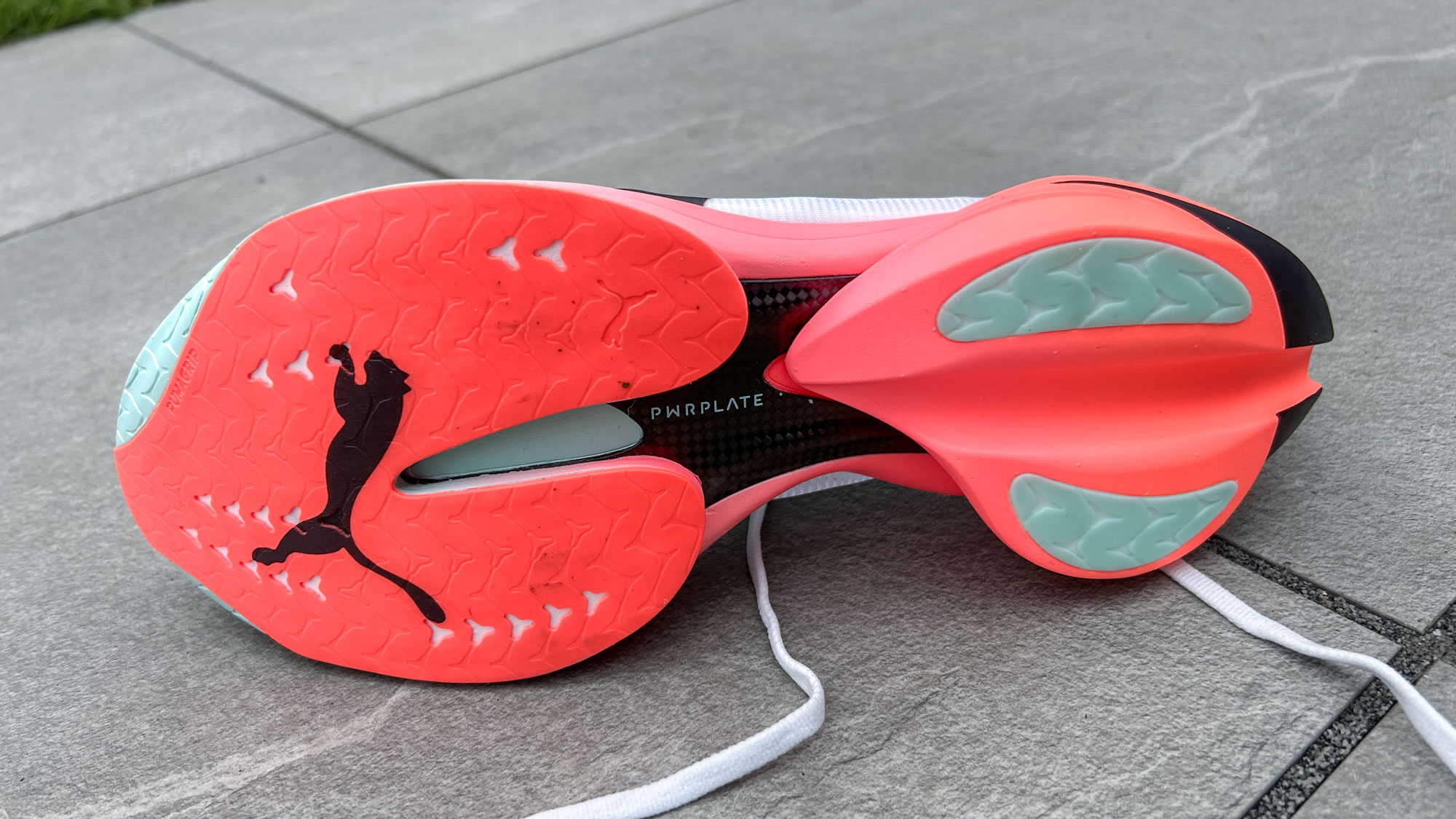
Puma shoes always offer good traction thanks to the PumaGrip rubber they use, and that’s still the case with the Fast-R 3, even though it only has a very thin layer of rubber on the bottom to keep the weight down.
After 50 miles, I can see some wear on the forefoot rubber on the shoe, but nothing worrying yet. Puma suggests the Fast-R 3 will last 200 miles/300km, which is not very durable but enough to carry you through a lot of races if you limit how much you use the shoe in training.
Puma Fast-R Nitro Elite 3 review: Running performance
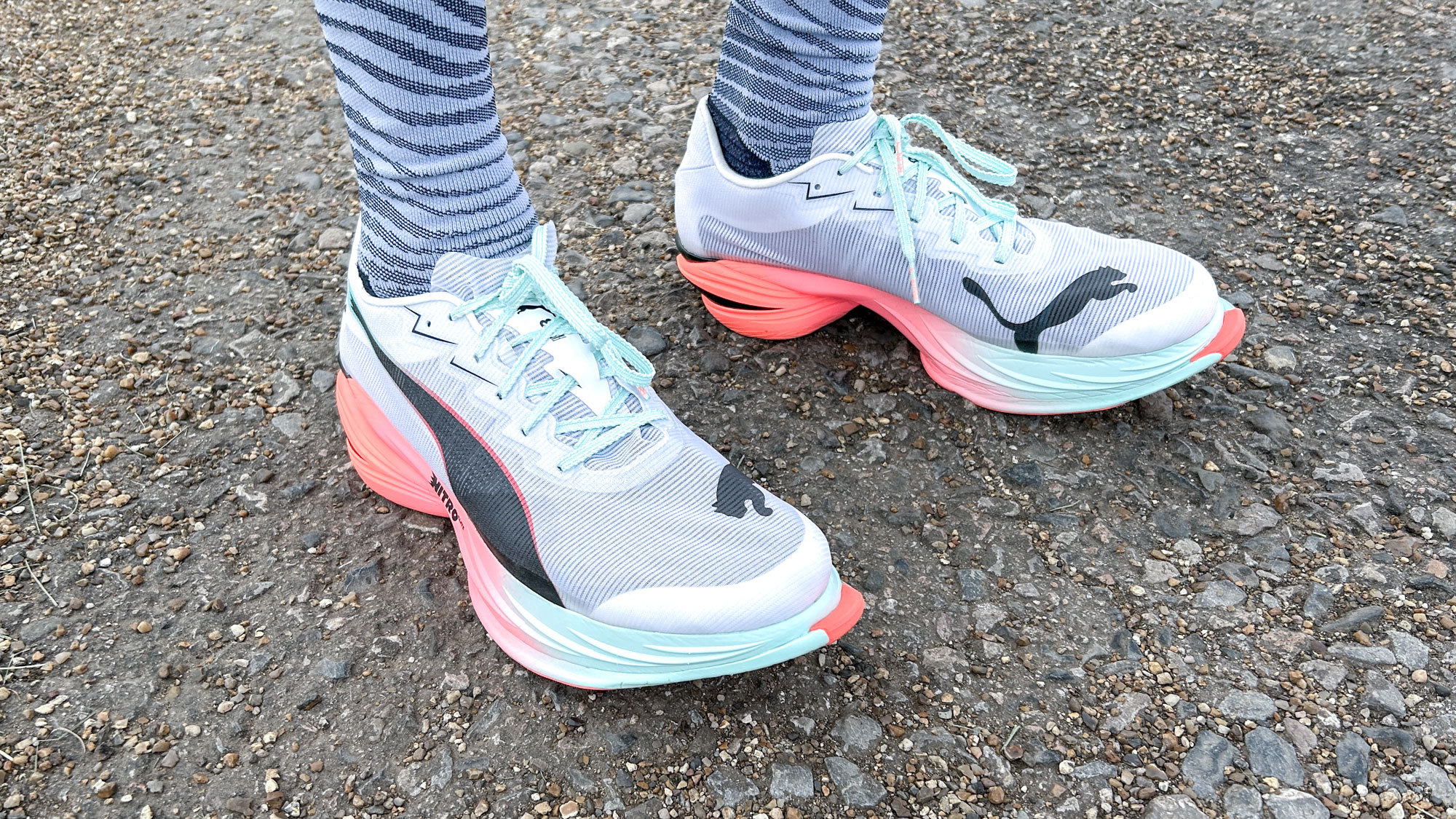
The Fast-R 3 landed on my doorstep just 10 days before the London Marathon, when I was still deciding what shoe to use for the race.
I had two good training runs to do the weekend before the marathon and used the Fast-R 3 for both, running a 15:53 5K at a parkrun and then a steady 10-miler where the smooth rocker on the shoe made sub-2:30 marathon pace feel almost effortless.
Those runs were enough to convince me to use the shoe for the marathon, and it helped me secure my fastest London Marathon time (in eight attempts) and my second-fastest marathon time overall, despite having to slow down in the last 10 miles of the race.
That last 10 miles is when the shoe shone most for me. I was tired and settled back into what felt like a fairly slow pace to try and avoid completely blowing up, but the shoe helped to keep me rolling along speedily enough to nab a fast time overall.
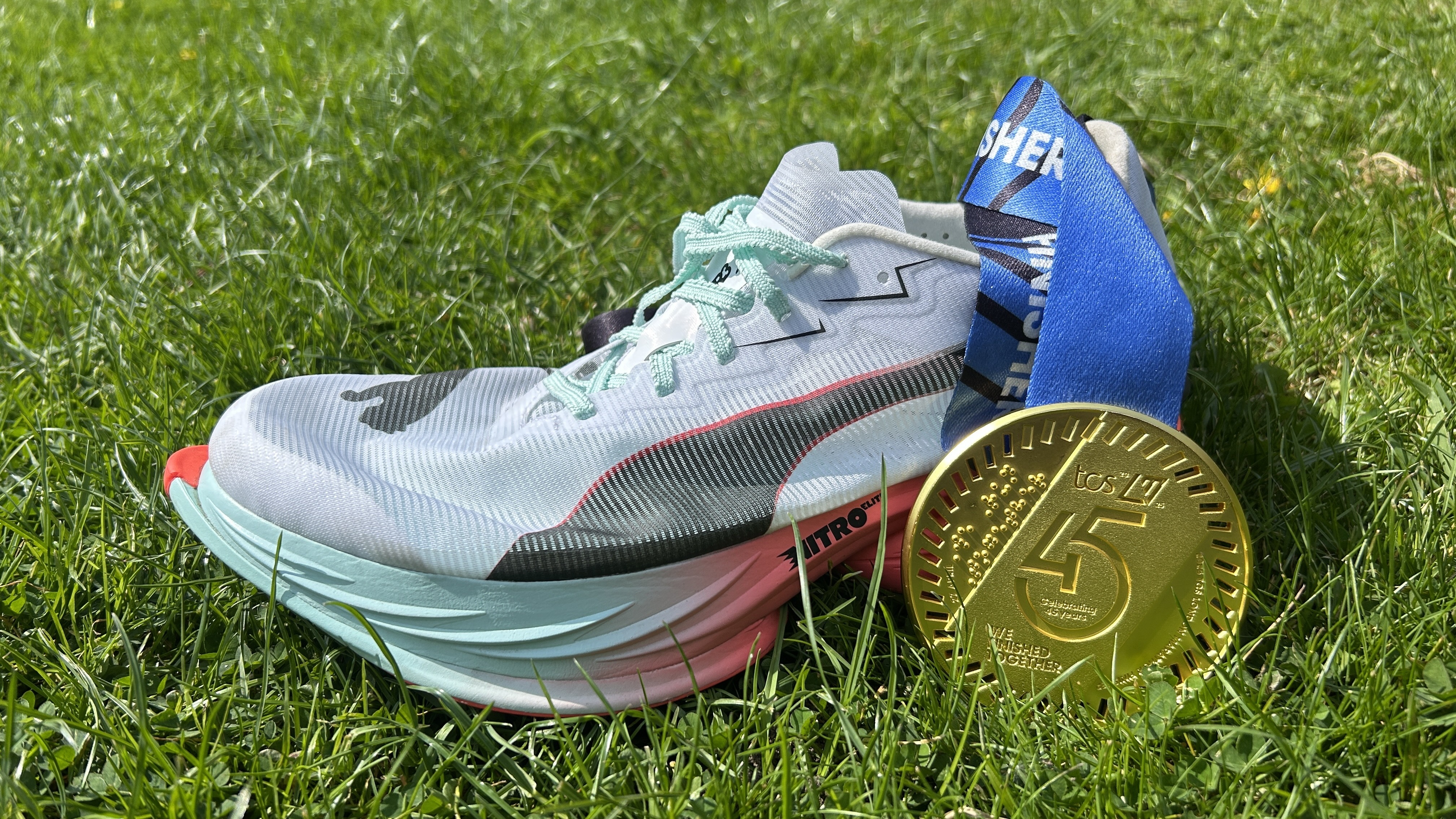
The extended carbon plate is noticeable in how it pushes you off your toes, and the lightweight design makes it easier to keep picking up your feet when tired late in races.
It’s an aggressive design, though, and while I loved how the shoe felt when running fast, the lack of support at the heel and pushy rocker might rub some runners up the wrong way.
Also, if I had completely imploded and had to walk or jog to the finish, this would not be a good shoe to do it in, owing to the lack of stability and support.
When you’re on your game and running well, the Fast-R 3 feels as good as any shoe I’ve ever run in, including my long-standing favorite racer, the Asics Metaspeed Sky Paris.
Should you buy the Puma Fast-R Nitro Elite 3?

If you simply want the fastest shoe available for your next race, the Fast-R 3 is one of my top two recommendations, along with the Asics Metaspeed Sky Paris.
The Puma has more of a rockered feel than the Asics and may well have the more efficient ride, but the Asics feels more natural and has been key to me getting through the last section of marathons while maintaining a fast pace. The Asics are also cheaper and easier to find at the moment.
Puma’s other racer, the Deviate Nitro Elite 3, is a more stable, natural-feeling shoe that’s still lightning quick, and substantially cheaper and more durable if you plan to use your super-shoe for lots of training plus race day.
Overall, it’s becoming harder and harder to stand out in the super-shoe market given the incredible competition from all brands, but Puma has managed to do it with the Fast-R 3.
It has a wild design that delivers an incredible ride, and I can’t wait to race in it again.

Nick Harris-Fry is an experienced health and fitness journalist, writing professionally since 2012. He spent nine years working on the Coach magazine and website before moving to the fitness team at Tom’s Guide in 2024. Nick is a keen runner and also the founder of YouTube channel The Run Testers, which specialises in reviewing running shoes, watches, headphones and other gear.
Nick ran his first marathon in 2016 and became obsessed with the sport. He now has PBs of 2hr 25min for the marathon and 15min 30sec for 5K. Nick is also a qualified Run Leader in the UK.
Nick is an established expert in the fitness area and along with writing for many publications, including Live Science, Expert Reviews, Wareable, Coach and Get Sweat Go, he has been quoted on The Guardian and The Independent.
You must confirm your public display name before commenting
Please logout and then login again, you will then be prompted to enter your display name.
